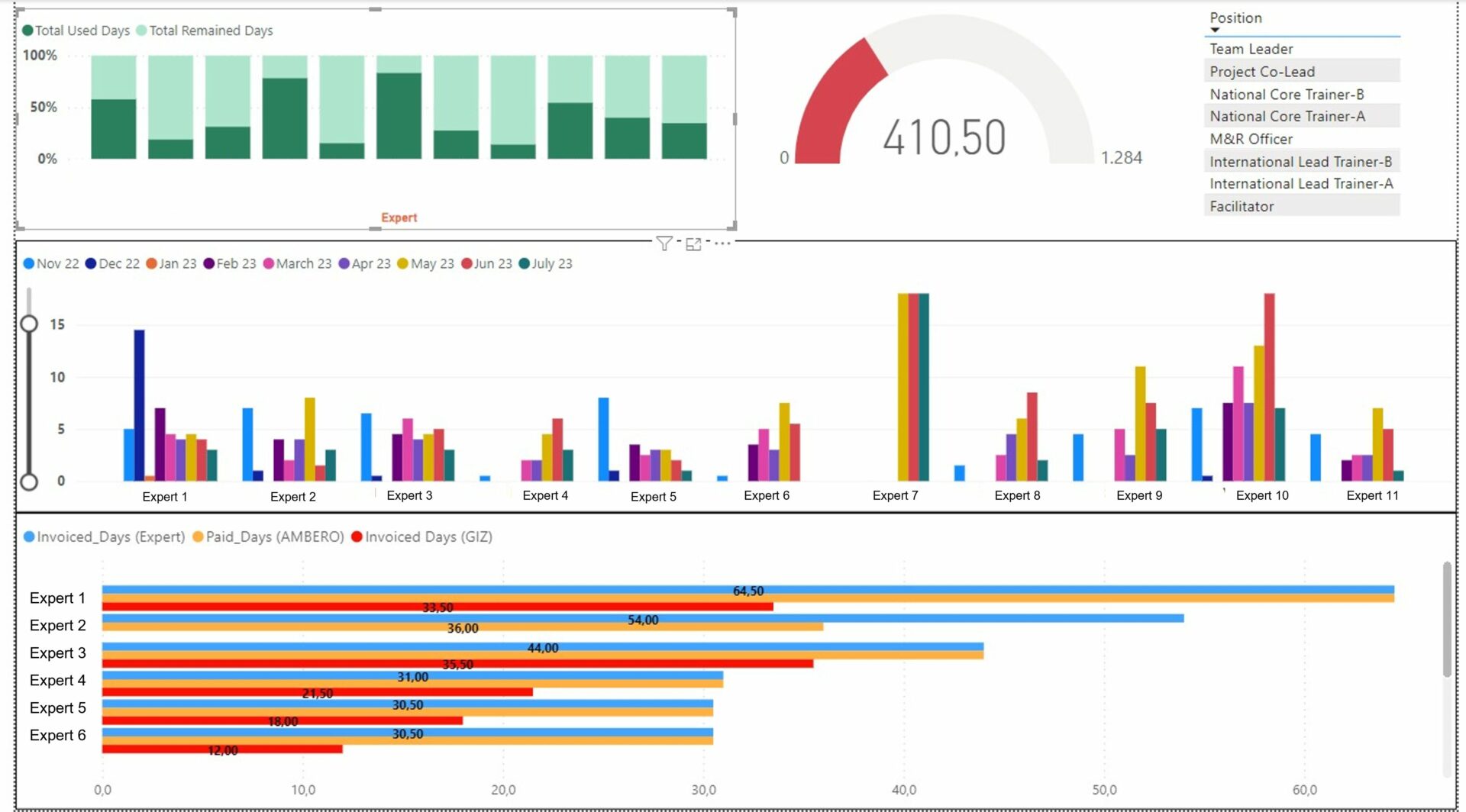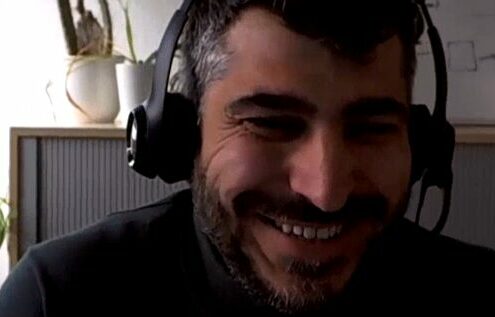On Peace Mediation & Data Collection – an Interview with Project Manager and Data Scientist Emre Bilgin
I do this, because …
Interview with Emre Bilgin, Project Manager and Data Scientist at AMBERO Consulting*
In this interview, Emre Bilgin tells us why project work and data science go so well together, highlights the tools he has developed, and shares his appreciation for collaborating with colleagues.
My passion is the use of data science within social sciences and in my daily work, in project management.
Emre, you have a master’s degree in International Security and Terrorism, and now you work for AMBERO as a Data Scientist. How does that fit together?
At AMBERO, I manage three different projects. They are all sustainable development projects, two of them in Iraq and one in Lebanon. Alongside my project management responsibilities, I actively contribute as a data scientist, leveraging my skills and data science tools to enhance these projects.
If I explain my background, it might make more sense. I have my master’s degree in International Security and Terrorism. I am now doing another master in Peace and Conflict Studies at Goethe-University in Frankfurt. Right now, I’m trying to write my master’s thesis on predicting the duration of civil wars using machine learning, for example.
Where did you get your expertise as a data scientist?
I hold a certification in data science from IBM and have undergone specialized training in data science through boot camps, and now, as I said, I’m trying to apply those skills into my project management.
Data science is a multidisciplinary field, very cross-cutting, and very easy to use in social science project management.
Working as a project manager at AMBERO is the best option for me to combine these two fields.
This makes us curious: how do you combine these two fields? Can you give us some examples?
One project is Peace Mediation in Iraq. We are working with youth and women and our goal is to train 200 young people on peace, peace mediation, peace resolution and data collection. These 200 young people will play a role to solve their local conflicts in Iraq. And at the end of the project, they will be certified mediators.
The client, GIZ (Deutsche Gesellschaft für internationale Zusammenarbeit), has imposed several challenging restrictions on the projects. Specifically, there are five areas in Iraq that pose accessibility challenges, and limitations on the number of female and youth participants set by GIZ in these locations. To address this, I developed a specialized platform designed to efficiently monitor incoming applications. Subsequently, we established evaluation criteria applicable to the pool of 3.000 applications received. Using this framework, we meticulously assessed and selected the top 200 applicants for participation.
How exactly does the platform work?
All of our applicants were able to log into the platform and then fill out the questionnaires that we developed for them. Based on the criteria that our experts developed, we mapped them and there is also an administration portal behind it. So, they have given their scores we have sorted, then we have selected the most promising 200 candidates from the different rural areas.
To implement our selection criteria on the applicants, I wrote a Python code for data processing and analysis. Utilizing this code, we applied the criteria to the dataset. To convey the outcomes in a comprehensible manner, we employed Tableau to create visualizations. These visualizations helped in presenting the distribution of applicants based on gender and district, facilitating a clearer understanding for GIZ.
[Editor’s note: Python is a programming language widely used in various fields such as web development, scientific computing, data analysis, artificial intelligence, machine learning, automation, and more. Tableau is a powerful and widely used data visualization software that enables users to create interactive and visually appealing dashboards, reports, and presentations from various data sources.]
What other tools have you developed?
For example, monitoring tools for our results-based monitoring. I created dashboards specifically designed for our collaboration with the donor organization, GIZ. These dashboards enable them to monitor our ongoing activities and achievements.
Was the dashboard your idea to enable better collaboration? Or was that a requirement for the project award?
We proposed it and GIZ accepted it because they saw that it was very helpful. That was a project-related contribution from my side, but there are also some internal data science contributions for AMBERO or Dorsch.**
What would be an example for internal data science contributions?
I am developing a dashboard based on Power BI to monitor our expert days. Let’s say we have two pools of experts, an international pool and a national pool, and all the experts have a certain number of days they can work on the project. It is very time-consuming and complex to monitor this when you have for example 15 or 20 experts in one pool. With the dashboard, you can see with one click that an expert has used 20 of his 50 expert days and there are 30 days left. You can also see that he has invoiced us for this number of days and that this number of days has been paid or not paid, all without the need for an Excel spreadsheet. As a project manager, I see the whole picture, which makes it much easier.
And what is it that fascinates you about this?
We collect the data, we visualize the data, we analyze the data, and we produce data-driven reports for all our stakeholders.
There are so many exciting and useful insights that can be drawn from the data.
For example, by analyzing our peace projects: Not only did it give us insights into how many participants applied and how many stayed on board, it also gave us insights that are helpful and applicable for future projects.
You seem to be very passionate about it. Is that what drives you?
My passion is the use of data science in the social sciences and in my daily work, my project work because I know that it is very effective, and all our partners are happy to receive this kind of digital product. It has a lot of potential, it’s very promising for the future.
Take agriculture as an example. I am very sure that in ten to 15 years, we will have smart agricultural projects to implement at AMBERO. For example, we need to combine agriculture with blockchain technology. Today, it is very popular to track every product, where it came from, how it was consumed, and how many days it was stored. We can expect to see more and more data-driven processes. And in our projects, we help people improve their farming practices, or we help people increase their work or their profits. And when I see the results, I am very happy. That is my motivation.
What is special about your team in Kronberg and the people who work there?
Our motivation is to implement projects for good.
To me, that means sustainability. I like that we are a very young and very motivated team. I’m working in the Regional and Economic Development section, and we are always very open to learning new things and taking on challenges. It is very good, and I feel very much part of my team.
And what does being part of the Dorsch Gruppe mean to you?
To be honest, it’s very exciting. We talk and exchange ideas with different colleagues from different companies of the Dorsch Gruppe. There is a lot of potential here and we also learn from each other and exchange experiences.
This also opens a lot of doors. For example, we did a backstopping mission in Jordan. We used Dorsch International Consultant’s office in Amman. We were not alone, we just got support from Dorsch, and I think that opens a lot of doors when we speak on behalf of Dorsch Gruppe.

 is Project Manager at our Technical Section
is Project Manager at our Technical Section 


